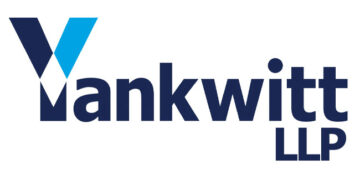“Internet pharmacy. Cheap generic medications online.”
“Eating this KILLS diabetes!”
And of course the eternally popular “Try Viagra for Free” and its infinite number of variations.
Messages with subject lines like these pop up in most people”™s email inboxes on a daily, if not hourly, basis. And while many recipients simply delete them ”” or, if their spam filters are doing their jobs, never see them at all ”” a large enough number apparently click through and visit online pharmacies like GlavMed and Canada Drugs.
There they purchase their Lipitor, Pradaxa and, yes, Viagra at considerably lower prices than what they would pay at their local CVS or Walgreens. When their medications arrive ”” apparently in the same packaging that drugmakers Boehringer Ingelheim, Lilly and Pfizer employ ”” they duly ingest them.
End result: Nothing whatsoever. Or an adverse reaction.
Or, in some cases, they die.
Welcome to the world of counterfeit medicine, one of the biggest scourges facing the prescription medicine industry.
The illicit trade extends far beyond buying pills from a guy in his basement. In 2010, the World Customs Organization estimated that the global market for counterfeit drugs was worth $200 billion, as compared with the combined worldwide heroin and cocaine markets, which stood then at $160 billion.
“If it”™s too affordable to be true, it”™s probably not true.” So says J. Aaron Graham, executive director for brand safety and security at Boehringer Ingelheim Pharmaceuticals Inc. (BIPI) in Ridgefield, the U.S. headquarters for the privately held German drug maker.
BIPI has partnered with the Food and Drug Administration (FDA) to get the word out to patients and health care providers via the “Know Your Source” initiative. The program involves posters in English and Spanish alerting patients about what to look for ”” safety information missing, product names different than expected, packaging that seems shoddy or unlike what they”™ve seen before.
Literature for physicians, nurses and pharmacists is also being distributed, warning that if they have noticed an unusual number of complaints about new side effects or lack of therapeutic effect, those patients may be using counterfeit drugs.
“It”™s really about maintaining a dialogue,” Graham said. “If a pharmacist hasn”™t seen a particular customer for several months, we encourage them to ask them if they”™re still taking their prescription and where they”™re getting it.
“The entire industry is trying to increase our ”˜eyes on the street”™,” he continued. “BI, Lilly, Pfizer, Merck ”” we all share information in this area that allows us to investigate.”
Behind much of this illicit activity are organized crime syndicates. According to the Center for Safe Internet Pharmacies (CSIP): “They often create the drugs they sell from scratch from various powders, including harmful ones. They may lace them with a small amount of the drug”™s active ingredient to ensure they pass chemical tests. Some criminal groups even obtain discarded out-of-date drugs and repackage them with fresh dates, or buy cheap generic drugs and replace the labels and packaging to make them look like top-brand medicines. To distribute the drugs, they operate across national borders and often sell them on rogue internet sites.”
Physicians are often unaware of the magnitude of the problem, Graham said. “The more information we can get to the physician, who can then communicate it to their patients, the better for everyone.”
But it isn”™t just patient-facing health care professionals who are unaware of the issue. Graham regularly meets with law enforcement officers who he says are stunned to learn of the size of the counterfeit drugs market. A day after Graham led a training session for 120 narcotics detectives in Sacramento, he received an email from a detective saying he and his team had discovered that many financially disadvantaged in the area were regularly buying their medications at swap meets and flea markets. “That”™s obviously illegal,” Graham said, “and likely counterfeit.”
In January, a Los Angeles woman, grieving her recently deceased sister and suffering from chronic pain, bought unlicensed pharmaceutical medication online as an affordable alternative and died within hours of taking the drugs. Police later said that rat poison was found in the medication.
The situation was doubly tragic, as the woman”™s sister had died mere hours after receiving a pair of injections from someone she thought was a licensed professional. According to the CSIP, an estimated 100,000 people around the world die each year from ingesting counterfeit drugs.
Even employees at the pharma giants are constantly receiving training. One of Boehringer”™s senior executives saw a poster in his personal doctor”™s office advertising a Canadian pharmacy promising lower-cost prescription medicines. A subsequent undercover purchase found that the firm”™s products were not approved for use in the U.S.
Although shoddy packaging and misspelling or absence of proper labeling can be relatively easy to detect, the larger counterfeiters take great pains to ensure their products look legit. Much like counterfeit money or DVDs, graphic artists are employed by the lawbreaking companies to produce packaging that looks precisely like that on the genuine product. Everything is “real,” except for the cut-rate ingredients inside.
The collection of evidence against such illicit suppliers requires patience, great attention to detail and a focus on ensuring the legal drug supply chain is protected.
Still, taming the internet is a gargantuan task. In October 2014, the National Association of Boards of Pharmacy reported that 96 percent of more than 10,000 internet drug outlets reviewed were operating out of compliance with U.S. pharmacy laws.
Though a significant number of the self-proclaimed internet pharmacies claim to be based in Canada ”” a known entity considered safe by most Americans ”” Graham says counterfeiters are often simply using it as a front.
“We do test purchases all the time, and the vast majority of them come from places like Vanuatu, Turkey, Bulgaria ”¦ places that are not provinces of Canada, to say the least,” he said.
In other cases, the online pharmacy is indeed located in Canada but purchasing its supplies from eastern Europe or elsewhere. Canadadrugs.com has been banned from wholesaling drugs to retailers, other distributors or wholesalers by the nation”™s health department, Canada Health, as it investigates “significant concerns” about its manufacturing processes.
On May 11, it was reported that an Evanston, Ill.-based oncologist had been forced to relinquish her medical license by state officials for using non-approved and misbranded cancer drugs on her patients. In exchange for not being prosecuted by the FDA, the doctor admitted she bought and dispensed some $1 million in illegal cancer drugs between 2008 and 2012 that were obtained from Quality Specialty Products, a pharmaceutical wholesaler owned by Canada Drugs, despite receiving numerous FDA warnings since 2009. The FDA had accused Canada Drugs of selling counterfeit versions of cancer drug Avastin in 2012.
Graham, a former FDA agent, said he meets regularly with the likes of the FDA, the Department of Homeland Security, and Interpol to discuss and conduct undercover investigations. According to Interpol, criminals have been found working in doctors”™ offices and pharmacies to gain access to legitimate medicines and help distribute counterfeits.
Graham noted that anyone uncertain of the legitimacy of their medications can use legitscript.com, whose database of prescription drugs, dietary supplements, bodybuilding supplements, and designer drugs includes their classifications and other important information, such as regulatory actions.
“Know Your Source” may be a small part of the anti-counterfeiting campaign, but it is a vital one, Graham said.
“We”™re up against some pretty sophisticated criminal organizations, but we continue to receive great support, both from within BI as well as from our law enforcement partners.”



















Hi Kevin, thanks for your coverage of this issue. The Center for Safe Internet Pharmacies have ample resources and anecdotes to share on this topic and would love to chat with you further about the work we’re doing to educate consumers. Feel free to reach me at kshorey@safemedsonline.org. Thank you!